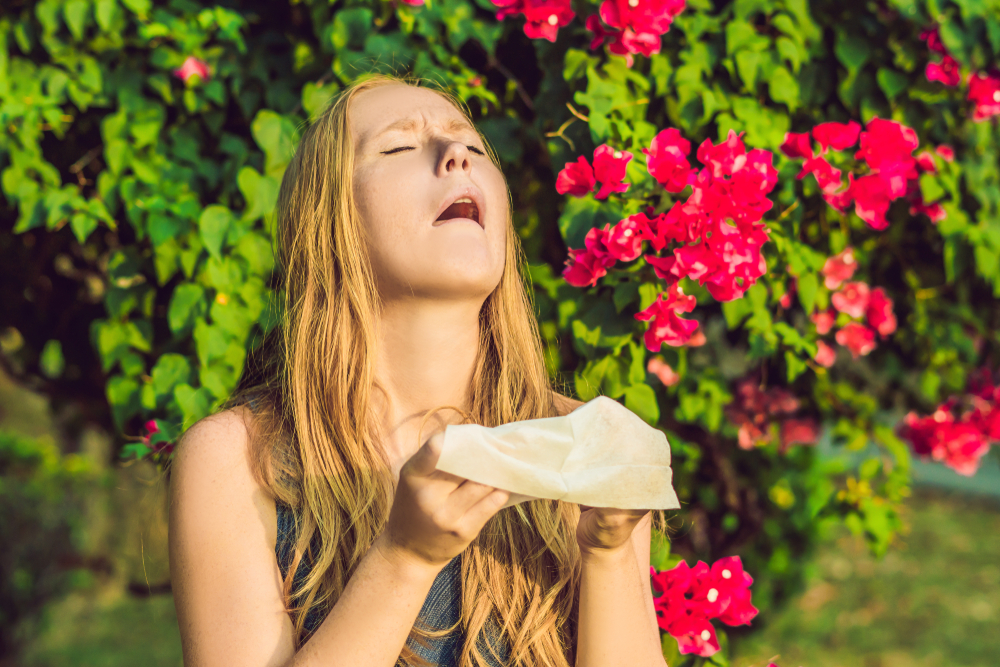Everything You Need To Know For Treating Allergies
Everything you need to know for treating allergies
Allergy is a reaction that is caused when a healthy immune system going haywire due to some allergens. The human immune system evolved to protect human beings from the ancestral unicellular organisms like bacteria, fungi, and the likes. When the immune system goes into an overdrive, it reacts to various environmental substances like pollens and certain industrial chemicals like solvents and dyes. Histamine a chemical secreted by the immune system cells causes a swelling of the normal cells and makes them leak fluid. This produces the familiar annoying symptoms of allergy. Apart from the common symptoms of allergies, it can also cause life-threatening anaphylaxis, which requires immediate medical attention to save the victim.

How is the overdrive of the immune system (allergic reaction) treated?
- The more orthodox approach is to give antihistamines. Antihistamines are medicines that prevent the binding of histamine to the normal cells.
- The important side effects of antihistamines are drowsiness, tiredness, dry mouth, dry eyes, blurred vision, constipation, etc. In aged patients, who suffer from thyroid diseases, symptoms include urine retention, seizures, diabetes, hypertension, etc. Those who are employed in industries need to be very cautious about using these medicines.
- However, with the advancements in the field of medicine, second-generation allergy medicines are now available that use a non-drowsy formula as well as control many other symptoms associated with traditional antihistamines.
What are the modern approaches in treatments?
- The recent advancements in treating allergy are to prevent the occurrence of an allergic reaction.
- The first step is to identify the triggers and avoid them carefully.
- Most allergies are seasonal and caused by pollens of grass and trees.
- People who have had earlier instances of insect sting allergies should carry an epinephrine auto-injector. It is essential to be able to use them properly, as they will save the person during an emergency. Additionally, it is best to protect oneself while stepping out by wearing clothes that cover the entire body.
What is the immune therapy?
- The very name indicates that it is taming the immune system to reduce its hyperactivity.
- Trigger identification is the first step, which is done by injecting different suspected agents under the skin. A swelling or redness indicates sensitivity.
- The identified triggers are injected once or twice in a week for about three to six weeks. Then the intervals are increased gradually over a year and then to a periodic maintenance shot for about three to five years.
- The second approach is to achieve the same result by the oral route. Special tablets containing small amounts of offending substances are placed sublingually. This fastens their absorption into the blood. This is called Sublingual Immunotherapy (SLIT). SLIT introduces the offending agent into the bloodstream slowly, and it helps the immune system to adjust to them amicably. This treatment has shown its efficiency in treating hay fever and other seasonal allergies.
- This is a form of non-antihistamine allergy medicine treatment.
What is anaphylaxis and how is it caused?
- In anaphylaxis, the immune system vehemently overreacts and produces a host of chemicals that drive the body into a shock. The blood pressure drops. The pulse becomes weak and rapid, tongue swells up, and the airways lead to restricted breathing. Hives on the skin, itching, flushed or pale skin, dizziness, and vomiting are some of the other predominant symptoms accompanied with anaphylaxis.
- An immediate injection of epinephrine is the need of the hour and is a non-antihistamine allergy medicine. People who are prone to violent allergic reactions should carry an emergency pack of epinephrine auto-injector kit.
- An injection of epinephrine alleviates the symptoms, but immediate medical attention is also needed as a second injection may be necessary.
What other treatment options are available?
- Besides antihistamine medication, non-antihistamine medicines like corticosteroids are also used in treating allergic reactions.
- New medications like mast cell stabilizers block the release of chemicals by the mast cells, a part of the immune system. They need to be taken regularly for a few days for effectiveness.
- Leukotriene inhibitors are a group of medicines that reduce or limit the production of leukotriene that causes congestion, runny nose, sneezing, etc. in hay fever.

